De 1072 à 1266
Periodo Norman tedesco e francese fino Vespri siciliani nel 1282.
Périodes Normande Allemande et Française jusqu’aux vêpres Siciliennes en 1282.
Norman German and French period until Vespers Sicilian period in 1282.
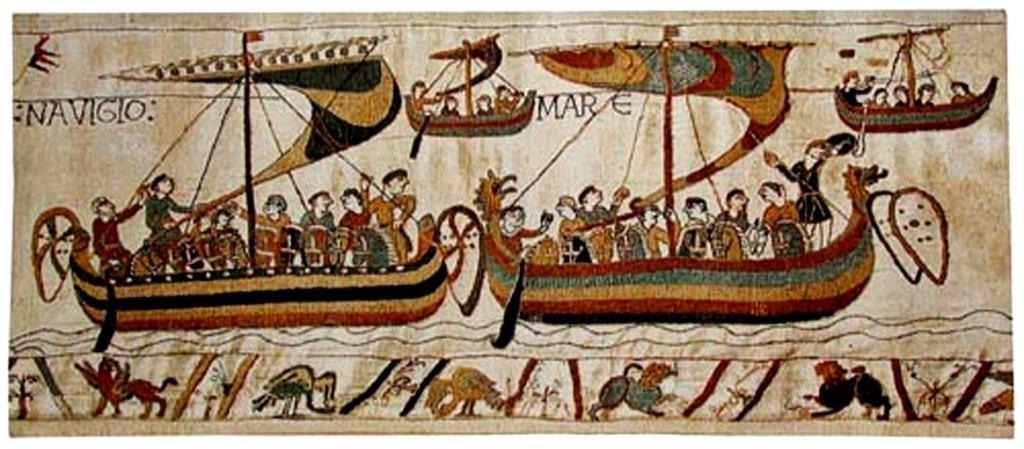
I Normanni di Sicilia provengono dalla Normandia in Francia via Scandinavia. Perché non valorizzare il contributo culinario che caratterizza le due regioni. Sidro e pesce affumicato dai paesi nordici sono citati la prima volta da Diodoro Siculo.
Les Normands de Sicile viennent de Normandie en France via les pays scandinaves. Pourquoi ne pas valoriser l’apport culinaire qui caractérise ces deux régions. Le cidre et poisson fumé des pays nordiques sont cités pour la première fois par Diodore de Sicile.
 The Normans of Sicily came from Normandy in France via Scandinavia. Why not enhance the culinary contribution that characterizes the two regions. Cider and Nordic countries smoked fish are cited first by Diodorus of Sicily.
The Normans of Sicily came from Normandy in France via Scandinavia. Why not enhance the culinary contribution that characterizes the two regions. Cider and Nordic countries smoked fish are cited first by Diodorus of Sicily. Ruggero II d'Altavilla Roger de Hauteville
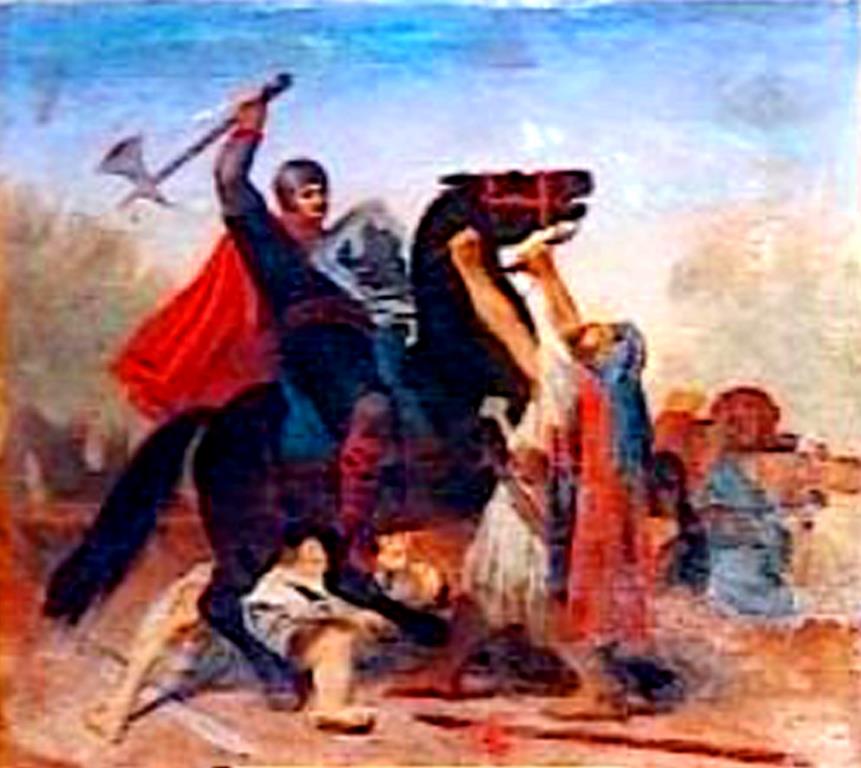
Questi stesso Normand viene Ruggero II d'Altavilla è proclamato re di Sicilia nel 1130. Proviene dalla linea d'Altavilla il cui nonno era Tancredi d'Altavilla, un piccolo signore della regione Coutances nella parte occidentale del Ducato della Normandia, Hauteville-la-Guichard (il Guiscart). I Normanni erano straordinariamente ambizioso comando guerrieri della carica di cavalleria (aspetto militare mancante nel sud Italia). Essi hanno posto le basi per il futuro regno di Sicilia (1130-1816).
De ces mêmes Normands provient Roger II de Hauteville qui est proclamé Roi de Sicile en 1130. Il est issu de la lignée des Hauteville dont le grand-père était Tancrède de Hauteville, un petit seigneur de la région de Coutances dans l'ouest du duché de Normandie, à Hauteville-la-Guichard (la Guiscart). Les Normands étaient des guerriers ambitieux maîtrisant remarquablement la charge de cavalerie (aspect militaire absent en Italie du Sud). Ils jetèrent les fondations du futur royaume des deux Sicile (1130–1816).

These same Normand comes Roger II of Hauteville is proclaimed king of Sicily in 1130. He comes from the line of Hauteville whose grandfather was Tancred of Hauteville, a small lord of Coutances region in the west of the Duchy of Normandy, Hauteville-la-Guichard (the Guiscart). The Normans were remarkably ambitious warriors command of the cavalry charge (military aspect missing in southern Italy). They laid the foundations of the future kingdom of Sicily (1130-1816)
Federico II di Hohenstaufen
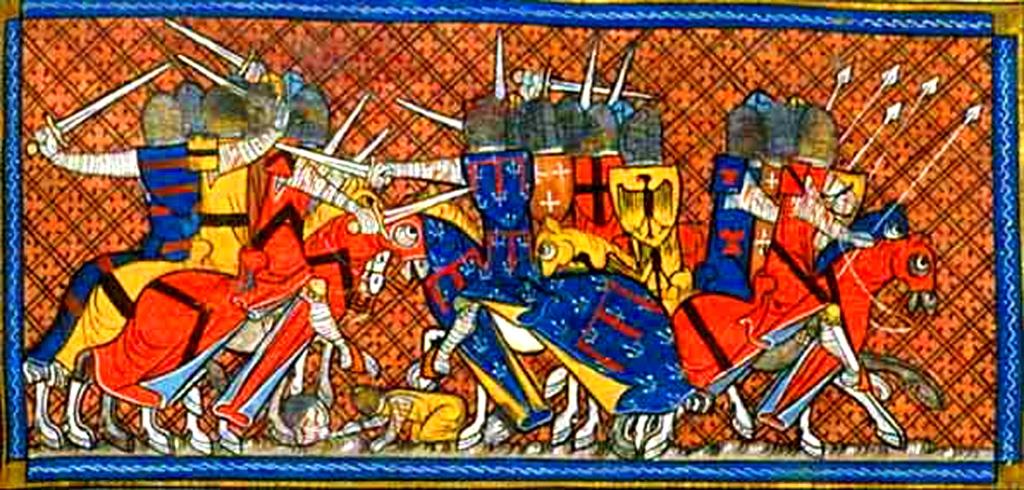
Norman dalla madre e cresciuto a Palermo fino all'età di diciotto anni, Federico II di Hohenstaufen fu imperatore del Sacro Romano Impero Germanico e Re delle due Sicilie. Scomunicato due volte, anche se è andato alla Sesta Crociata, dove riuscì nel 1229 a recuperare Gerusalemme senza combattere. Attraverso la diplomazia ha firmato il Trattato di Giaffa con il successore di Saladino, e fu incoronato re di Gerusalemme.
Normand par sa mère et élevé à Palerme jusqu’à l’âge de dix-huit ans, Frédéric II de Hohenstaufen fut empereur du Saint Empire Romain Germanique et Roi des deux Siciles. Excommunié à deux reprises, il monta cependant la sixième croisade, où il réussit en 1229 à récupérer Jérusalem sans combattre. Par la diplomatie il signa le traité de Jaffa avec le successeur de Saladin, et fut couronné roi de Jérusalem.
Norman by his mother and raised in Palermo until the age of eighteen years, Frederick II of Hohenstaufen was emperor of the Holy Roman German Empire and King of the two Sicilies. Excommunicated twice, though he went the Sixth Crusade, where he succeeded in 1229 to recover Jerusalem without a fight. Through diplomacy he signed the Treaty of Jaffa with the successor of Saladin, and was crowned King of Jerusalem.
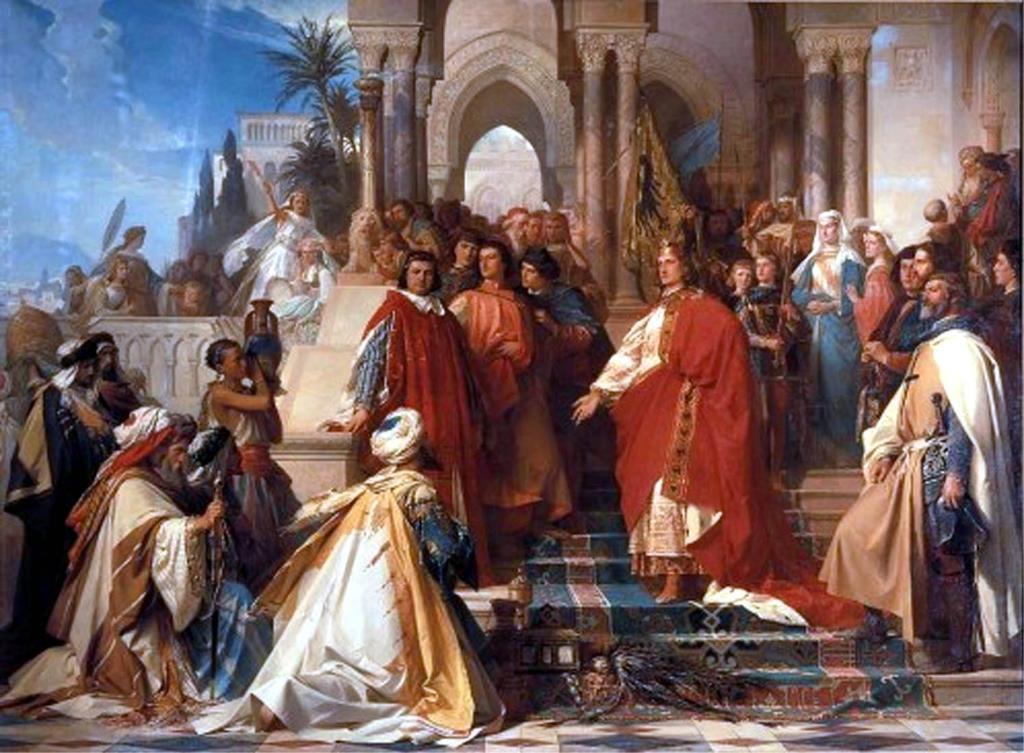
Vespri Siciliènes di 1282
Les Vêpres Siciliènes de 1282
The Sicilian Vespers of 1282
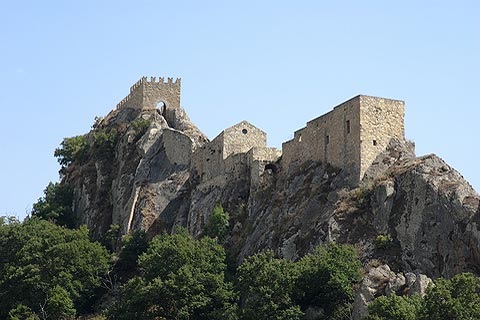
Château de Sperlinga
1265: Papa Urbano IV dà il regno di Sicilia a Carlo d'Angiò, fratello del re Luigi IX di Francia detto St. Louis.
Lo 31 marzo 1282 Solo 17 anni dopo, il "Vespri Siciliani" significa una rivolta e una rivolta popolare della Sicilia contro il dominio feudale del re francese Carlo d'Angiò.
1265 : Le pape Urbain IV donne le royaume de Sicile à Charles d’Anjou, frère du roi de France Louis IX dit saint Louis.
Le 31 mars 1282 Seulement 17 ans après, les « Vêpres siciliennes » désignent un soulèvement et une révolte populaire de l'île de Sicile contre la domination féodale du roi français Charles d'Anjou.
1265: Pope Urban IV gives the kingdom of Sicily to Charles of Anjou, brother of the King of France Louis IX said Saint Louis. The 31 March 1282 Only 17 years later, the "Sicilian Vespers" refer to a popular uprising and revolt on the island of Sicily against the feudal domination of the French king Charles d'Anjou.
Castello di Sperlinga :
Solo roccaforte sostenuta dai francesi durante i Vespri siciliani del 1282.
Seule place forte sauvegardée par les français lors des Vêpres Siciliennes de 1282.
Only stronghold saved by the French during the Sicilian Vespers of 1282.
Lo 31 marzo 1282 Solo 17 anni dopo, il "Vespri Siciliani" significa una rivolta e una rivolta popolare della Sicilia contro il dominio feudale del re francese Carlo d'Angiò.
1265 : Le pape Urbain IV donne le royaume de Sicile à Charles d’Anjou, frère du roi de France Louis IX dit saint Louis.
Le 31 mars 1282 Seulement 17 ans après, les « Vêpres siciliennes » désignent un soulèvement et une révolte populaire de l'île de Sicile contre la domination féodale du roi français Charles d'Anjou.
1265: Pope Urban IV gives the kingdom of Sicily to Charles of Anjou, brother of the King of France Louis IX said Saint Louis. The 31 March 1282 Only 17 years later, the "Sicilian Vespers" refer to a popular uprising and revolt on the island of Sicily against the feudal domination of the French king Charles d'Anjou.
Castello di Sperlinga :
Solo roccaforte sostenuta dai francesi durante i Vespri siciliani del 1282.
Seule place forte sauvegardée par les français lors des Vêpres Siciliennes de 1282.
Only stronghold saved by the French during the Sicilian Vespers of 1282.
Castello di Caltabellotta
GPS : 37° 34' 41.35" N 13° 12' 35.18" E
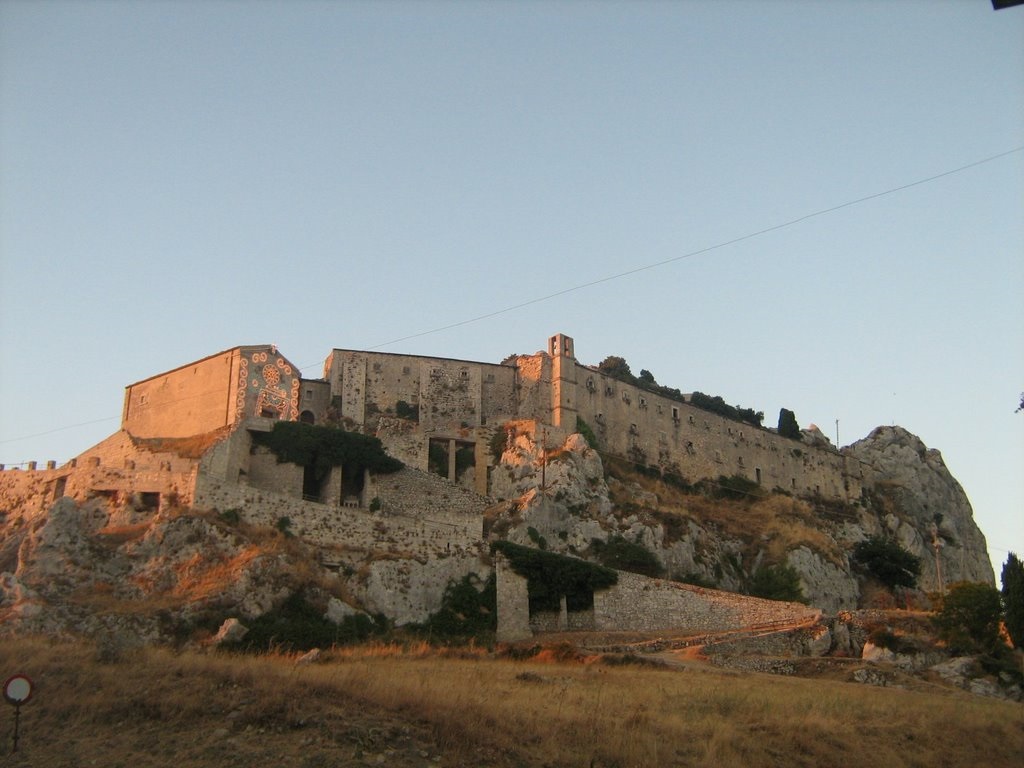
Caltabellotta Castello Norman
La guerra tra la casa di Barcellona e la casa dei Capetingi inizia e dura per vent'anni, fino a quando la pace di Caltabellotta (1302)
La guerre entre la maison de Barcelone et la maison Capétienne commence et dure vingt ans, jusqu'à la Paix de Caltabellotta (1302)
The war between the house of Barcelona and the Capetian house began and lasted twenty years, until the Peace of Caltabellotta (1302)
1377: la morte del re Giacomo Federico III d'Aragona.
Periodo di rivalità e la costruzione di numerose fortezze sotto il dominio dei quattro vicari:
Artale Alagona II reggente, Francesco Ventimiglia, Guglielmo Peralta e Manfredi III Chiaramonte, che divenne il più potente dei quattro Vicari. Egli governò il regno in nome della giovane Maria, sempre minore della regina siciliana.
1377 : mort du Roi Jacques Frédéric III d’Aragon.
Période de rivalités et de construction de nombreuses places fortes sous la domination des quatre vicaires :
Artale Alagona II le régent, Francesco Ventimiglia, Guglielmo Peralta et Manfredi III Chiaramonte qui devint le plus puissant des quatre vicaires. Il gouverna le royaume au nom de la jeune Marie, reine de Sicile toujours mineure.
1377: death of King Jacques Frederic III of Aragon.
Period of rivalry and the construction of many fortified places under the domination of the four vicars:
Artale Alagona II the regent, Francesco Ventimiglia, Guglielmo Peralta and Manfredi III Chiaramonte who became the most powerful of the four vicars. He ruled the kingdom in the name of the young Mary, Queen of Sicily, still a minor.
La guerre entre la maison de Barcelone et la maison Capétienne commence et dure vingt ans, jusqu'à la Paix de Caltabellotta (1302)
The war between the house of Barcelona and the Capetian house began and lasted twenty years, until the Peace of Caltabellotta (1302)
1377: la morte del re Giacomo Federico III d'Aragona.
Periodo di rivalità e la costruzione di numerose fortezze sotto il dominio dei quattro vicari:
Artale Alagona II reggente, Francesco Ventimiglia, Guglielmo Peralta e Manfredi III Chiaramonte, che divenne il più potente dei quattro Vicari. Egli governò il regno in nome della giovane Maria, sempre minore della regina siciliana.
1377 : mort du Roi Jacques Frédéric III d’Aragon.
Période de rivalités et de construction de nombreuses places fortes sous la domination des quatre vicaires :
Artale Alagona II le régent, Francesco Ventimiglia, Guglielmo Peralta et Manfredi III Chiaramonte qui devint le plus puissant des quatre vicaires. Il gouverna le royaume au nom de la jeune Marie, reine de Sicile toujours mineure.
1377: death of King Jacques Frederic III of Aragon.
Period of rivalry and the construction of many fortified places under the domination of the four vicars:
Artale Alagona II the regent, Francesco Ventimiglia, Guglielmo Peralta and Manfredi III Chiaramonte who became the most powerful of the four vicars. He ruled the kingdom in the name of the young Mary, Queen of Sicily, still a minor.
